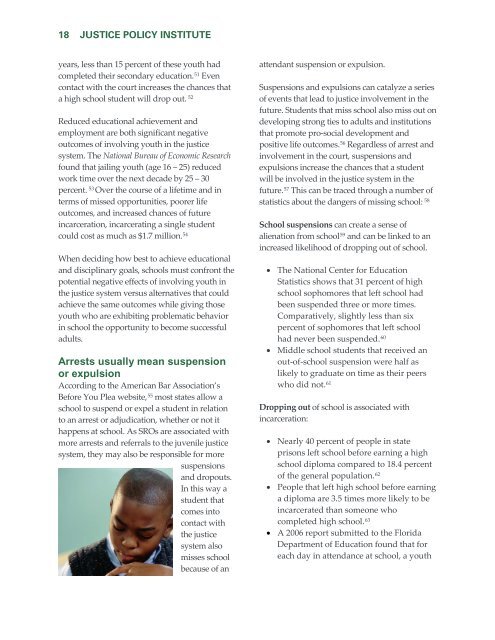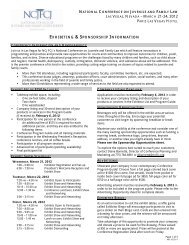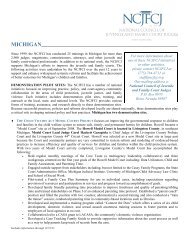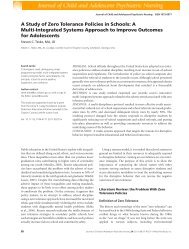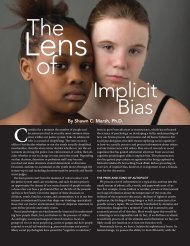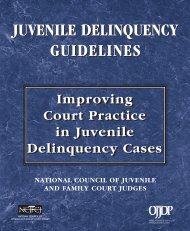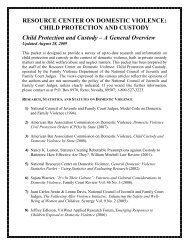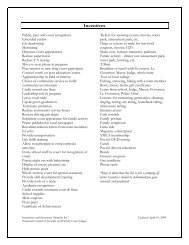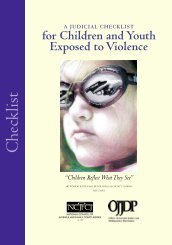EDUCATION UNDER ARREST: - Justice Policy Institute
EDUCATION UNDER ARREST: - Justice Policy Institute
EDUCATION UNDER ARREST: - Justice Policy Institute
- No tags were found...
Create successful ePaper yourself
Turn your PDF publications into a flip-book with our unique Google optimized e-Paper software.
18 JUSTICE POLICY INSTITUTEyears, less than 15 percent of these youth hadcompleted their secondary education. 51 Evencontact with the court increases the chances thata high school student will drop out. 52Reduced educational achievement andemployment are both significant negativeoutcomes of involving youth in the justicesystem. The National Bureau of Economic Researchfound that jailing youth (age 16 – 25) reducedwork time over the next decade by 25 – 30percent. 53 Over the course of a lifetime and interms of missed opportunities, poorer lifeoutcomes, and increased chances of futureincarceration, incarcerating a single studentcould cost as much as $1.7 million. 54When deciding how best to achieve educationaland disciplinary goals, schools must confront thepotential negative effects of involving youth inthe justice system versus alternatives that couldachieve the same outcomes while giving thoseyouth who are exhibiting problematic behaviorin school the opportunity to become successfuladults.Arrests usually mean suspensionor expulsionAccording to the American Bar Association’sBefore You Plea website, 55 most states allow aschool to suspend or expel a student in relationto an arrest or adjudication, whether or not ithappens at school. As SROs are associated withmore arrests and referrals to the juvenile justicesystem, they may also be responsible for moresuspensionsand dropouts.In this way astudent thatcomes intocontact withthe justicesystem alsomisses schoolbecause of anattendant suspension or expulsion.Suspensions and expulsions can catalyze a seriesof events that lead to justice involvement in thefuture. Students that miss school also miss out ondeveloping strong ties to adults and institutionsthat promote pro-social development andpositive life outcomes. 56 Regardless of arrest andinvolvement in the court, suspensions andexpulsions increase the chances that a studentwill be involved in the justice system in thefuture. 57 This can be traced through a number ofstatistics about the dangers of missing school: 58School suspensions can create a sense ofalienation from school 59 and can be linked to anincreased likelihood of dropping out of school.• The National Center for EducationStatistics shows that 31 percent of highschool sophomores that left school hadbeen suspended three or more times.Comparatively, slightly less than sixpercent of sophomores that left schoolhad never been suspended. 60• Middle school students that received anout-of-school suspension were half aslikely to graduate on time as their peerswho did not. 61Dropping out of school is associated withincarceration:• Nearly 40 percent of people in stateprisons left school before earning a highschool diploma compared to 18.4 percentof the general population. 62• People that left high school before earninga diploma are 3.5 times more likely to beincarcerated than someone whocompleted high school. 63• A 2006 report submitted to the FloridaDepartment of Education found that foreach day in attendance at school, a youth


